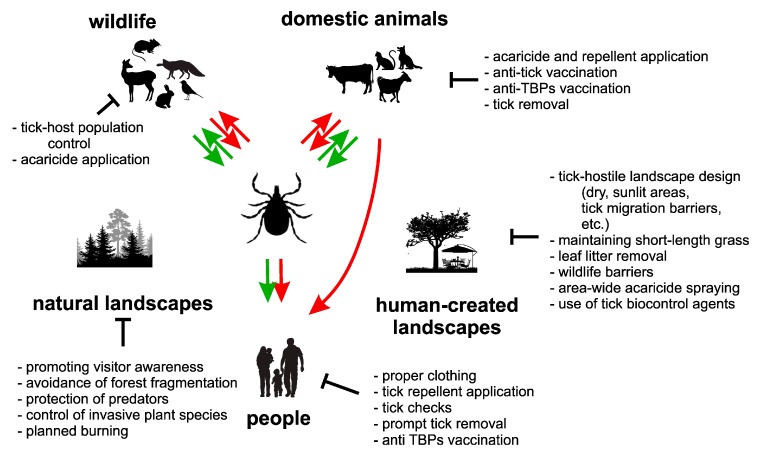Figure 2.
Tick management strategy: Tick activity and risk associated with TBPs can be managed using a broad variety of approaches. These include direct reduction of tick populations using chemical or natural-origin acaricides, tick pathogens (e.g., fungi), or encouraging tick predators. Further, tick activity can be decreased by limiting availability of potential animal hosts (e.g., rodents or ungulates) and by creating tick-hostile environments (dry, sunlit areas lacking leaf litter and other vegetal debris) which limit tick survival and reproduction. Finally, TAR can be decreased by adhering to proper practices (wearing long clothes, using tick repellents, checking body after visiting tick-infested areas and prompt removal of all attached ticks) as well as basic public health (vaccination against TBEV, medical consultation immediately after appearing of any possible marks of infection by a TBP). Green arrows show pathways important in tick life cycle; red arrows show possible avenues of TBP transmission.

